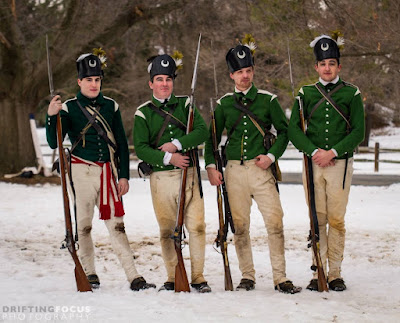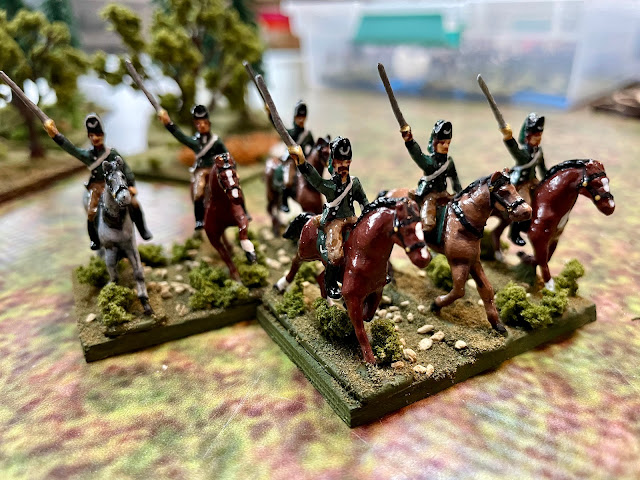The Queens Rangers were a Loyalist (Tory) Regiment that fought in the American War of Independence.
It may the best known Loyalist unit. Late in the war it became part of the British Establishment as British Regulars. After the war, members of the regiment were settled in Ontario, Canada due to the hostility of the victorious American patriots (rebels depending on your point of view). The regiment still exits as part of the Canadian Army (Queens York Rangers, I think.)
The regiment was unique in many ways.
First it was a descendent of the famous Roger's Rangers from the French and Indian War, although the regiment's most notable officer was John Graves Simcoe and not Robert Rogers who initially raised the unit.
The regiment consisted of ten companies of infantry and one troop of light cavalry called hussars. Another troop from the 16th British Light Dragoons were often attached.
The regiment was organized as a "light corps" similar to the converged battalions of British Light "Bobs" that were so effective in the war.
 |
| Reenactors in the Uniform of the Queens Rangers |
In addition to the line companies that functioned as light infantry the regiment had an official light company and grenadier company just like the British line infantry regiments of the period.
 |
| From the Osprey book on American Loyalist units. |
In addition to the line companies, the light infantry company and the grenadier company the regiment featured an additional Highland company pictured above. The Hussar troop is also pictured but other renditions show the green uniform to be much darker.
Most Loyalist units began the war in green uniforms to distinguish them from the British red. Many changed over to red during the war on the basis that they were subjects of the crown and should have the same status as regular British units.
The Queens Rangers were one of the exceptions and they retained their green uniforms throughout the war.
My collection featuring the Queens Rangers is limited to 12 infantry figures and 6 hussar figures. I intend to add the Highland company, a troop from the 16th Light Dragoons and possibly more line companies for use in Rebels and Patriots skirmish actions.
The Scruby line was limited but at the time they were first produced they represented a sincere attempt to have war-game units in distinctive uniforms.
By today's standards Scruby's are small 25mm figures. Although the height is close, the "bulk" is not.
I have no problem mixing them in separate units with the old Musket Miniatures 25mm AWI or Airfix or even Irregular Miniatures of 20mm AWI.
I enjoy the old Scruby figures because I think they have a classic look to them. I also gloss coat them for the same reason.
 |
| The troop of Hussars. It's debatable how many men the troop could actually put in the saddle but the unit is too unique to ignore! |
 |
| My "battalion" of infantry. |
 |
| I was ablate obtain a Kings and Queen's color from Maverick flag in the UK. |














